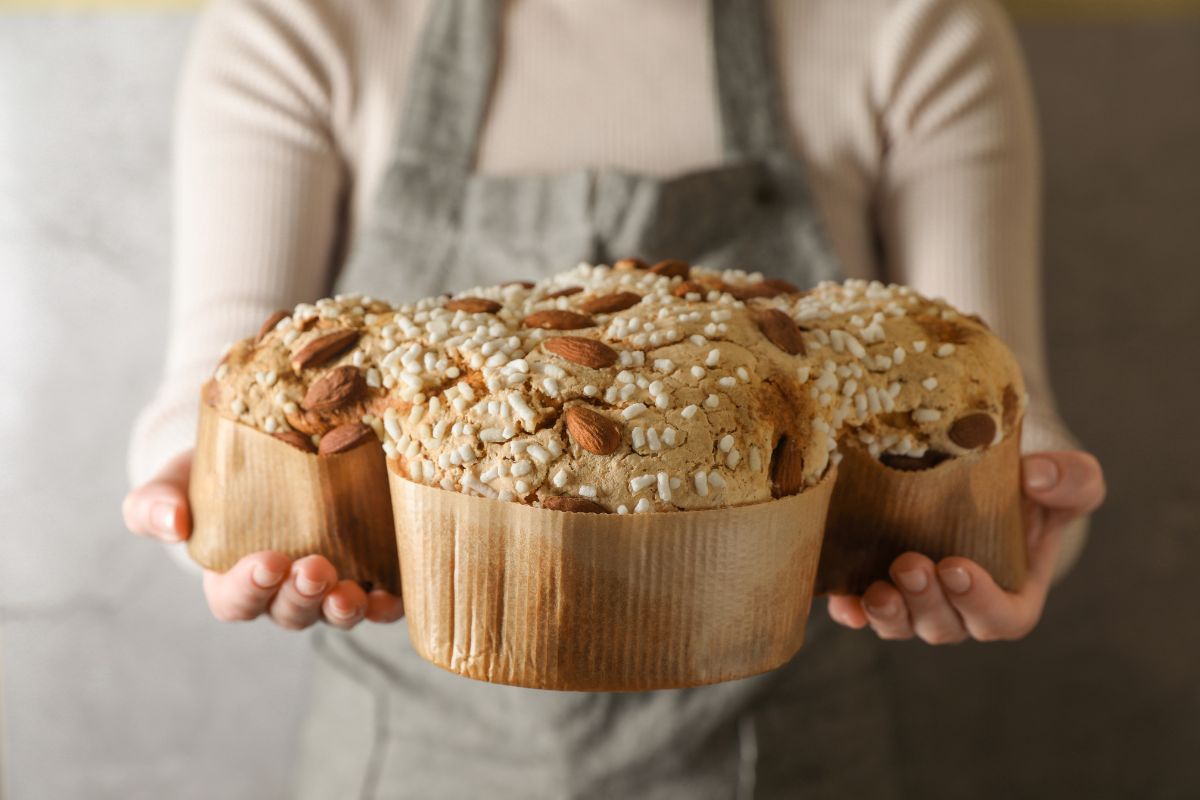
The typical Roman breakfast starts with Maritozzi! Of ancient origins, the Maritozzo will surprise you.
Filled with soft whipped cream, maritozzo is one of the most beloved sins of gluttony by the Romans.
The origins of the name Maritozzo take us back first to ancient Rome, and then to the Middle Ages, when it contained raisins, candied fruit and pine nuts. Initially it was the bread of refreshment for farm workers, then it represented an exemption from liturgical fasting. In fact, it was eaten during Lent, when it was nicknamed Er santo Maritozzo, or Quaresimale.
The origins of the Maritozzi tradition in Rome
According to a first version, the origin of the word Maritozzo comes from the custom, by the boys, of offering this sweet to their girlfriend every first Friday of March. They used to hide inside the pastry a small gift for their beloved, such as a ring or a jewel. At that point the girl would jokingly start calling her future husband with the nickname maritozzo, that means a husband with a belly. A second version of the origins of the Maritozzo says that it was the wives who prepared this recipe for their husbands who went to work in the fields every day. This small loaf, simple but consistent, contained flour, egg, lard, salt, honey and raisins. It represented an energetic and restorative break during the hard work. In any case, it seems that the Maritozzo was a recipe closely linked to the figure of the two lovers, to the exchange of promises and, more generally, to love.

The changes to the Maritozzi recipe
The Maritozzo that has survived to this day is more similar to the one prepared in the Middle Ages. This is the recipe developed for religious holidays, in convents. It was during this period that the Maritozzo was born as we know it today, with its typical rounded shape. Around 1700, with the spread of leavened dough, the Maritozzo recipe also spread to shops and homes, becoming the typical Roman dessert for holidays. With the Maritozzo, for example, one could break the Lenten fast, replacing the lard with butter or olive oil. For this reason it was jokingly called Er Santo Maritozzo, or Quaresimale, referring to the holy cause. In fact, it was the only dessert allowed during that time of the year. In 1833, the most famous of Roman poets, Gioacchino Belli, even wrote a sonnet entitled La Quaresima, in which he says that the true Christian is the one who eats maritozzi during Lent.
The Maritozzi today
The Maritozzo was born in Rome, but has gradually spread throughout the center-south of Italy. The classic version is the one from Lazio region. Round shaped, the dough is sometimes enriched with pine nuts and raisins and finally filled with whipped cream. In the Marche region, the Maritozzo takes on a more elongated shape. Further south, in Puglia and Sicily, the Maritozzo is instead braided and does not include the addition of pine nuts and raisins in the dough. Today, there are countless reinterpretations of the Maritozzo. Filled with chocolate cream, pistachio cream, cream and strawberries, or with gelato. The savory Maritozzo, a street food version, has also been very popular lately. With anchovies and burrata, octopus and potatoes, cod and vegetables.

Maritozzi in Rome: how and when
During our tour, not only do you have the opportunity to taste different types of Maritozzo, but you can also enjoy a typical Roman breakfast and at the same time a wonderful walk in one of the most magical neighborhoods of Rome, Trastevere. In fact, Maritozzo is a leavened cake that is mainly eaten for breakfast. Obviously, it must be very fresh and filled, preferably freshly made. The cream must also be very fresh, whipped by hand. In every neighborhood there is at least one pastry shop or bar renowned for maritozzi. It is not uncommon, therefore, to see a line of people waiting their turn outside the door, especially on Sunday mornings. Sunday is in fact the day when Romans indulge in that extra sin of gluttony. Popular is also the savory Maritozzo, like the one of the famous Maritozzo Rosso in Trastevere, which offers unusual and delicious variations.
The best 5 Maritozzi in Rome
- Regoli – Via dello Statuto 60 – Esquilino
- Il Maritozzaro – Via Ettore Rolli 50 – Trastevere
- Roscioli – Piazza Benedetto Cairoli – Pigna
- Pasticceria Ghimenti – Via E. Jenner – Monteverde nuovo
- Pasticceria Parenti – Via Ottaviano 33 – Prati
- Casa Manfredi – Viale Aventino 91/93 – Aventino, Circo Massimo

The recipe
For the starter:
50 g of flour
50 ml of water
3 g of brewer’s yeast
1 teaspoon of sugar
For the dough:
200 g of flour
20 ml of milk
45 g of honey
40 ml of seed oil
1 yolk
300 ml of fresh whipping cream for the filling
50 g of icing sugar
Preparation
Firstly, prepare the yeast, mixing all the ingredients above listed in a small bowl. Let it grow for about half an hour. Secondly, mix oil, milk, honey and the yolk in a bowl. Slowly add the flour, stirring with a fork. Add now yeast to the mixture and the rest of flour to form soft dough. Let’s knead hardly until the dough is being smooth by you. In short, let the dough rise until doubled. Divide the dough into 6 equal balls, giving it a slightly elongated shape, therefore, let it grow likewise until doubled. Most important, heat the oven to 180 °C. Before baking, take care to brush the brioche with egg white, therefore, bake again for about 15 minutes. After that, once well cooled down, make a scar longitudinally to host the dressing. You are ready, in conclusion, to fill up your maritozzo with white cold whipped cream. Let’s sprinkle it with icing sugar and Buon Appetito.

Recommended wine pairing
The ideal wine to pair with the classic Maritozzo could be a Cannellino di Frascati. Or a Moscato d’Asti DOCG. In the variants with red fruits, which are not very common, the ideal is the Aleatico di Gradoli, with a garnet red color with purple tones. Aromatic and characteristic scent, it gives a fresh, soft, velvety and sweet flavor.
What are you waiting for? Book our tour! Enjoy your breakfast everyone!
















